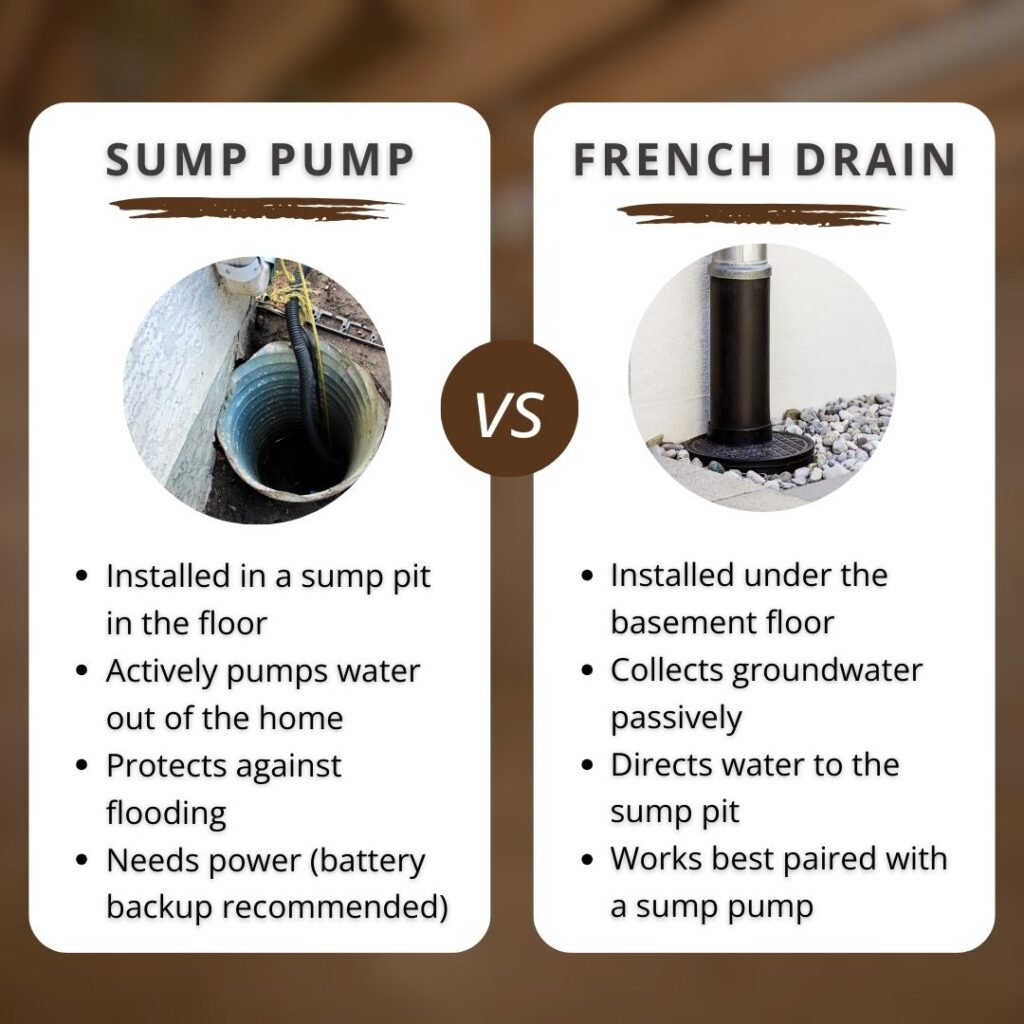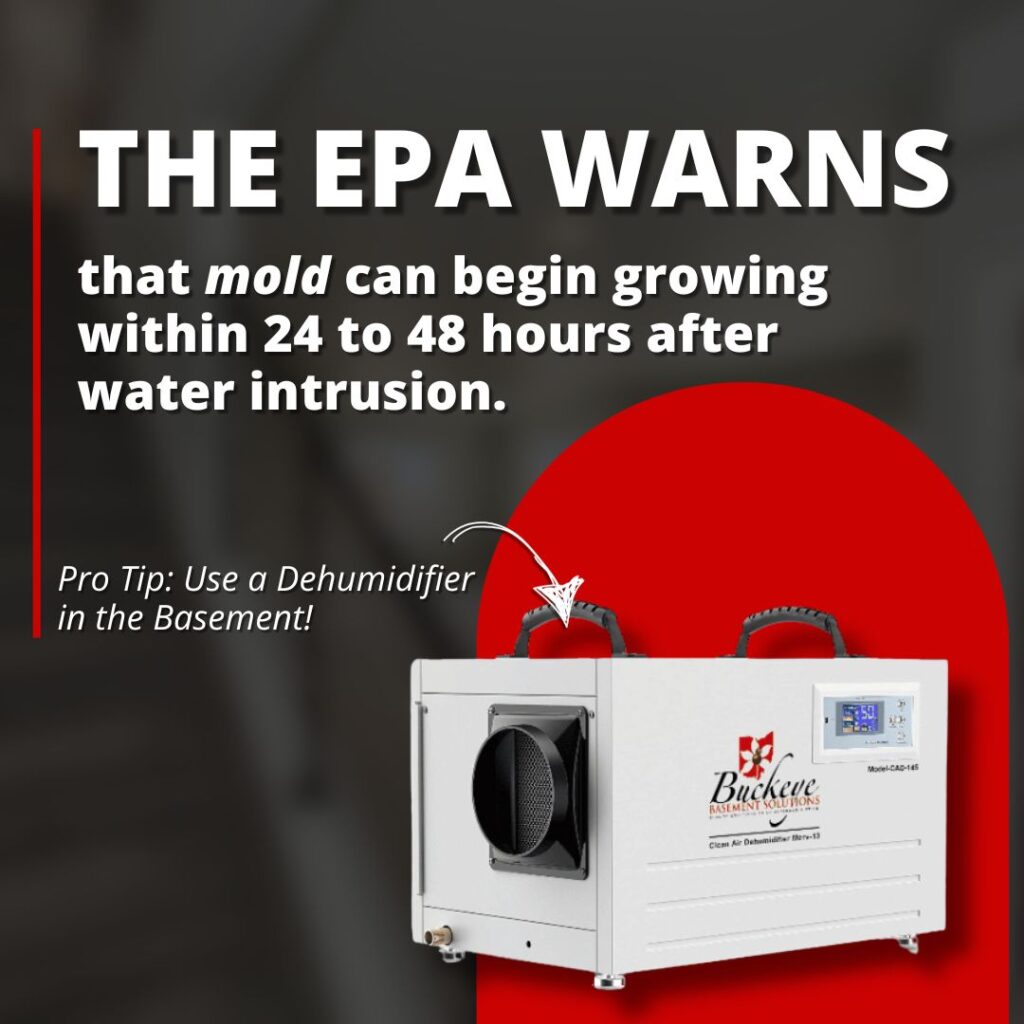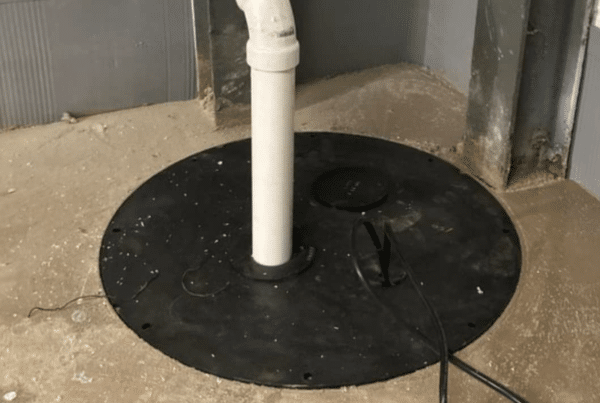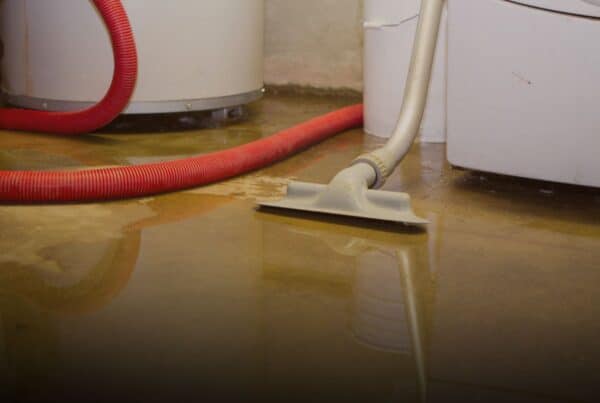When your basement takes on water, it’s easy to feel overwhelmed by all the waterproofing options. Two of the most common systems you’ll hear about are a sump pump and a French drain, but what do they actually do inside the basement? And how do you know which one your home needs?
The truth is, these systems often work together. But understanding the difference between a sump pump and a French drain inside the basement can help you make smarter decisions, avoid future water damage, and protect your home for the long haul.
What Does a French Drain Do for the Basement?
A French drain is a trench drainage system installed just below the concrete floor, around the perimeter of the foundation. It’s designed to collect groundwater and move it away from your home.
This type of system is especially useful when water seeps in through basement walls, floor cracks, or the cove joint (where the floor and wall meet).
Instead of allowing that water to pool or rise, a French drain catches it beneath the surface and redirects it into a sump basin for removal.
How it works:
- A narrow trench is dug along the basement’s interior edges.
- A perforated pipe is laid in gravel within that trench.
- The pipe slopes gently toward a sump pit.
- The floor is sealed back up once the system is in place.
French drains are passive systems. They don’t move water on their own. They rely on gravity and a sump pump to keep things flowing.

What Does a Sump Pump Do?
A sump pump is the muscle of your interior drainage system. It sits in a sump pit at the lowest point in your basement or crawl space and removes water collected by the French drain or other waterproofing systems.
When enough water fills the pit, the pump activates and pushes the water out of your home through a discharge pipe. That pipe usually leads to a dry well, storm drain, or designated drainage area away from the foundation.
There are two main types of sump pumps:
- Submersible pumps, which sit underwater in the pit and are quieter and more efficient
- Pedestal pumps, which sit above the pit and are easier to service
At Buckeye Basement Solutions, we often install submersible pumps with battery backup options, which keep your basement protected even during power outages.
Do You Need a Sump Pump or a French Drain?
This is where many get confused. The answer usually isn’t one or the other. In fact, a French drain inside the basement almost always works in combination with a sump pump.
Here’s the key difference:
- A French drain collects and channels the water
- A sump pump gets rid of the water
Think of the French drain as the gutters and the sump pump as the downspout. You need both to carry water away effectively.
That said, there are a few cases where you might need only one system.
- If your home has poor surface drainage but no interior seepage, a sump pump alone might be enough
- If you already have a reliable exterior waterproofing system, a French drain alone could manage the small amount of seepage
But in most cases, pairing the two is the safest and most efficient long-term fix.
Why Interior Drainage Is Often Better Than Exterior Systems
Exterior French drains (installed around the outside of the home) can also help redirect water, but they often require deep excavation, landscaping removal, and higher costs.
Interior systems, on the other hand, are installed from inside the basement with less disruption and a faster timeline. They’re also easier to inspect, maintain, and upgrade in the future.
According to HomeAdvisor, the average cost to install an interior system is between $5,000 and $18,000, depending on the basement size and drainage needs.
For many homeowners, especially in the Midwest, an interior French drain with a sump pump offers the most cost-effective and reliable waterproofing strategy.
Signs You Might Need One or Both Systems
If you’re not sure where to start, look for these common warning signs:
- Water stains or damp spots along the basement walls
- Pooled water after heavy rain
- Mold or mildew smell in the basement
- Peeling paint, cracked drywall, or buckled flooring
- Visible cracks in the basement floor or wall joints
- High indoor humidity or condensation
The longer you wait to fix a moisture issue, the more damage it can cause. According to FEMA, even one inch of water in the basement can lead to over $10,000 in repairs. Mold can start growing in as little as 24 to 48 hours.

Other Questions Homeowners Are Asking
Can a sump pump fail?
Yes. That’s why we recommend battery backup systems, regular inspections, and installing high-quality pumps. A backup pump can keep your home protected during storms or power outages.
Do I need a French drain in a crawl space, too?
If water is collecting under your home, a French drain can be paired with crawl space encapsulation to keep moisture out and improve air quality.
Will this stop mold and musty odors?
In many cases, yes. These systems prevent the standing water and high humidity that lead to mold. We often pair them with clean air dehumidifier systems for full moisture control.
What if my basement walls are cracked or shifting?
If structural issues are present, a drainage system alone isn’t enough. We offer foundation repair solutions to restore safety and stability.
When to Call a Professional
If your basement is damp, leaking, or smells musty, don’t wait for the problem to get worse. Water issues can quickly lead to mold growth, damaged belongings, and costly repairs.
Buckeye Basement Solutions specializes in creating complete basement waterproofing systems, including French drains, sump pumps, encapsulation, and structural repair.
We start with a full inspection to identify the real source of moisture and then build a custom plan for your home.
Conclusion
Sump pumps and French drains are both powerful tools for basement waterproofing, but they serve different roles. A French drain inside the basement collects water from walls and floors, while a sump pump removes that water and keeps your home dry.
Most homes benefit from having both, especially in areas with high water tables, poor soil drainage, or changing seasons. Getting in touch with a professional is the best way to know what your home really needs.



